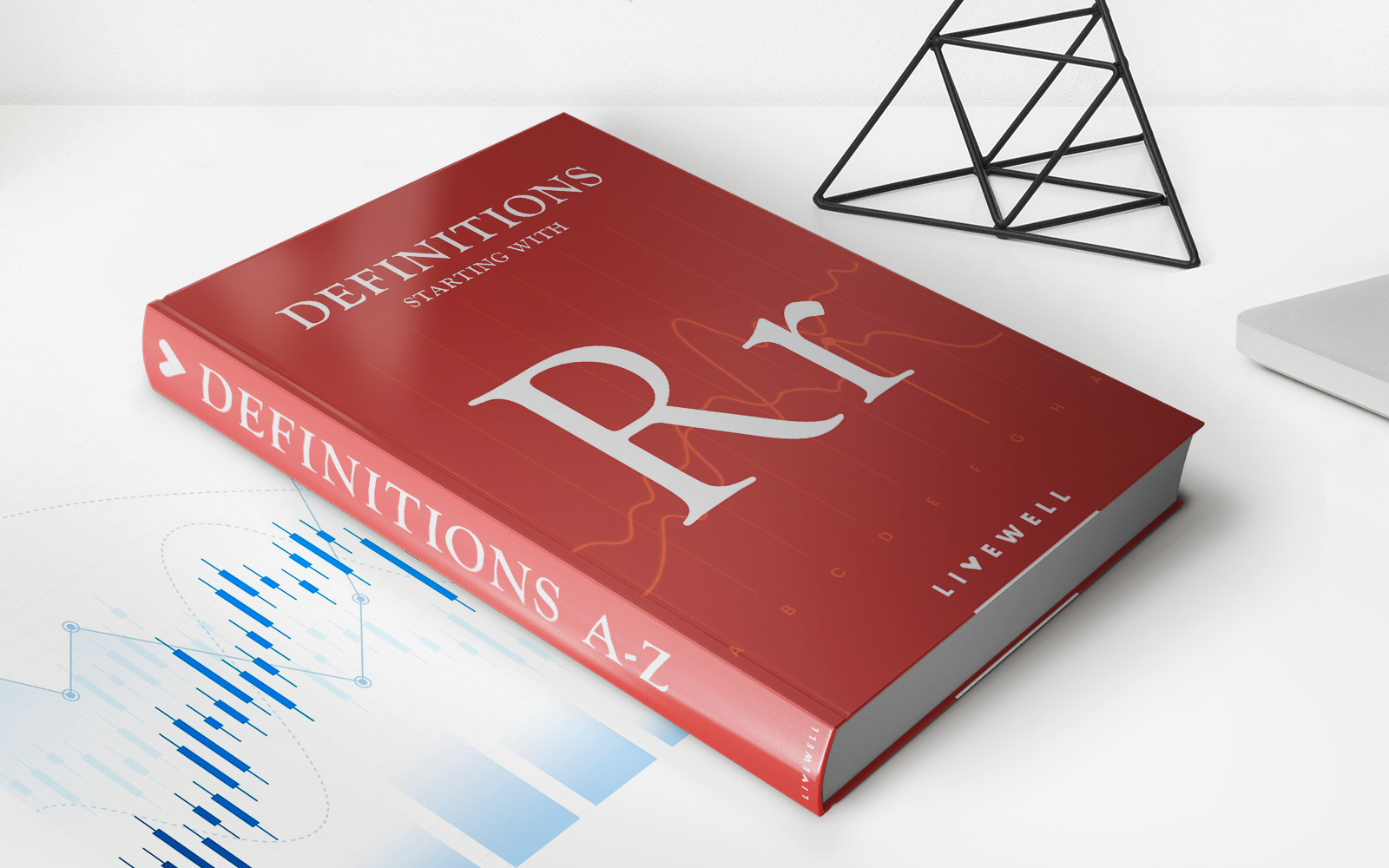Home>Finance>How Does The Current Boom In Mergers And Acquisitions Differ From Ones In Earlier Years?


Finance
How Does The Current Boom In Mergers And Acquisitions Differ From Ones In Earlier Years?
Published: February 25, 2024
Discover the unique attributes of the current wave of mergers and acquisitions in finance, setting it apart from previous years. Explore the factors driving this boom and its implications.
(Many of the links in this article redirect to a specific reviewed product. Your purchase of these products through affiliate links helps to generate commission for LiveWell, at no extra cost. Learn more)
Table of Contents
Introduction
The current surge in mergers and acquisitions (M&A) activity is significantly distinct from those in earlier years, reflecting the evolving dynamics of the global business landscape. This article delves into the multifaceted aspects that differentiate the present M&A boom from its predecessors, shedding light on the economic, technological, regulatory, and strategic factors that underpin this transformative trend.
Amidst the current economic milieu, characterized by unprecedented disruptions and rapid digitalization, M&A activities have assumed a novel complexion. The convergence of various macroeconomic forces, technological advancements, and regulatory shifts has engendered a fertile ground for a distinct breed of mergers and acquisitions, redefining the traditional paradigms that once governed such transactions.
As we navigate through the intricate web of contemporary M&A endeavors, it becomes evident that the amalgamation of economic, technological, regulatory, and strategic elements has spawned a new era of deal-making, distinguished by its scale, scope, and underlying motivations. This article endeavors to unravel the nuances of this transformative landscape, offering insights into the forces that delineate the current M&A boom from its historical counterparts.
Economic Environment
The current surge in M&A activity is intricately intertwined with the prevailing economic environment, which is marked by a confluence of factors that distinguish it from earlier periods. One significant aspect is the global economic recovery following the tumultuous events of the past year. As economies rebound from the impact of the pandemic, businesses are seeking strategic partnerships and acquisitions to capitalize on emerging opportunities, expand their market presence, and fortify their competitive positions.
Moreover, the low interest rate environment prevalent in many regions has rendered capital more accessible, incentivizing companies to pursue M&A deals as a means of deploying excess cash reserves or accessing funding for expansion. This financial landscape contrasts with historical periods characterized by higher borrowing costs, thereby shaping the nature and scale of contemporary M&A transactions.
Furthermore, the accelerating pace of technological innovation and disruption has engendered a heightened emphasis on acquiring specialized capabilities and intellectual property, driving companies to engage in M&A activities as a conduit for harnessing innovation and gaining a competitive edge in rapidly evolving markets.
These economic dynamics, coupled with shifting consumer behaviors and market trends, have propelled a wave of M&A transactions characterized by a strategic focus on digital transformation, sustainability, and resilience. As such, the economic underpinnings of the current M&A surge underscore a departure from historical norms, reflecting a strategic imperative to adapt to the evolving contours of the global economy.
Technology and Globalization
The current wave of mergers and acquisitions is profoundly shaped by the transformative impact of technology and the relentless march of globalization. Unlike earlier periods, the pervasive influence of digitalization has catalyzed a seismic shift in the M&A landscape, compelling companies to pursue acquisitions that augment their technological capabilities, digital infrastructure, and data analytics prowess.
Furthermore, the borderless nature of technology and commerce has propelled companies to seek cross-border M&A opportunities as a means of accessing new markets, diversifying their customer base, and fortifying their global footprint. This globalization-driven approach to M&A is a departure from historical trends, wherein domestic consolidation often took precedence over international expansion.
Moreover, the convergence of technology and globalization has given rise to a new breed of M&A transactions, characterized by a strategic imperative to harness digital innovation, leverage global supply chains, and capitalize on emerging market trends. This confluence of technological advancement and global interconnectedness has redefined the contours of M&A activities, ushering in an era where digital prowess and global reach are pivotal determinants of strategic success.
As such, the current wave of M&A transactions is emblematic of a paradigm shift driven by the symbiotic relationship between technology and globalization. Companies are increasingly compelled to navigate this dynamic landscape, seeking acquisitions that not only bolster their technological capabilities but also position them as formidable contenders in the global arena, thereby setting this era apart from its predecessors.
Regulatory Environment
The regulatory landscape surrounding mergers and acquisitions has undergone notable evolution, distinguishing the current surge in M&A activity from earlier epochs. Regulatory frameworks governing antitrust, competition, data privacy, and foreign investment have witnessed heightened scrutiny and recalibration, shaping the contours of contemporary M&A transactions.
One pivotal aspect of this regulatory evolution is the increasing emphasis on antitrust enforcement, particularly concerning large-scale M&A deals. Regulatory authorities are scrutinizing proposed transactions more rigorously, especially those involving tech giants and digital platforms, reflecting a concerted effort to curb monopolistic practices and safeguard market competition.
Furthermore, the intersection of M&A activity with data privacy regulations has emerged as a critical consideration, particularly in deals involving companies with extensive consumer data assets. The evolving regulatory stance on data protection and privacy has engendered a new layer of complexity in M&A transactions, necessitating meticulous due diligence and compliance measures to navigate this regulatory terrain.
Additionally, the recalibration of foreign investment regulations in various jurisdictions has shaped the global M&A landscape, influencing the ease with which cross-border transactions can be executed. Heightened scrutiny of foreign acquisitions, particularly those deemed sensitive from a national security or strategic standpoint, has underscored the evolving regulatory considerations that permeate contemporary M&A endeavors.
Consequently, the regulatory environment surrounding M&A transactions has assumed a heightened significance, with companies navigating a complex web of antitrust, data privacy, and foreign investment regulations. This regulatory evolution sets the current M&A boom apart from earlier periods, underscoring the imperative for meticulous compliance and regulatory foresight in executing transformative transactions in today’s global business environment.
Financing
The financing landscape underpinning the current surge in mergers and acquisitions (M&A) presents a stark departure from historical paradigms, reflecting a confluence of factors that have reshaped the funding dynamics of transformative transactions. One notable aspect is the prevailing low interest rate environment, which has rendered capital more accessible and cost-effective, thereby incentivizing companies to pursue M&A deals as a strategic avenue for expansion and growth.
Moreover, the proliferation of alternative financing mechanisms, such as private equity, venture capital, and special purpose acquisition companies (SPACs), has broadened the funding options available to companies engaging in M&A activities. This diversification of financing sources has engendered greater flexibility in structuring deals, enabling companies to tailor financing arrangements to suit the unique dynamics of their transactions.
Furthermore, the growing prominence of leveraged finance and debt capital markets in funding M&A transactions has reshaped the financial underpinnings of contemporary deals. Companies are leveraging debt as a means of funding acquisitions, capitalizing on the low cost of borrowing and the favorable debt market conditions to facilitate strategic expansion and consolidation.
Additionally, the emergence of innovative financing structures, such as earnouts, seller financing, and contingent consideration, has introduced greater nuance and complexity to the financing landscape of M&A transactions. These structures enable companies to align incentives, mitigate risk, and optimize deal economics, underscoring the evolving nature of financing mechanisms in the current M&A milieu.
As such, the financing dynamics of the present M&A boom are characterized by a blend of accessible capital, diverse funding sources, and innovative financing structures, setting this era apart from earlier periods marked by different funding constraints and mechanisms. This evolving financing landscape underscores the strategic imperative for companies to navigate a multifaceted array of funding options as they embark on transformative M&A endeavors in today’s dynamic business environment.
Strategic Objectives
The current surge in mergers and acquisitions (M&A) is underpinned by a distinct set of strategic objectives that differentiate it from earlier periods, reflecting the evolving imperatives and motivations that propel transformative deal-making in today’s business landscape. One pivotal strategic objective driving the present wave of M&A activity is the pursuit of digital transformation and technological innovation. Companies are increasingly leveraging M&A transactions as a conduit for acquiring specialized capabilities, digital infrastructure, and intellectual property, positioning themselves at the forefront of technological advancement and digital disruption.
Moreover, the strategic imperative to fortify market presence and expand into new geographies has propelled a wave of cross-border M&A transactions, as companies seek to access new markets, diversify their customer base, and establish a global footprint. This globalization-driven strategic objective sets the current M&A boom apart from earlier eras, wherein domestic consolidation often took precedence over international expansion.
Furthermore, the heightened focus on sustainability, ESG (Environmental, Social, and Governance) considerations, and resilience has emerged as a defining strategic objective shaping contemporary M&A endeavors. Companies are integrating ESG considerations into their M&A strategies, seeking acquisitions that align with their sustainability goals, enhance their ESG performance, and fortify their resilience in the face of evolving environmental and social challenges.
Additionally, the pursuit of strategic partnerships and alliances to drive innovation, scale operations, and diversify product offerings has underscored the collaborative nature of M&A activities in the current landscape. Companies are leveraging M&A transactions as a means of fostering synergies, harnessing complementary strengths, and fostering innovation ecosystems that propel strategic growth and differentiation.
As such, the strategic objectives underpinning the current M&A surge reflect a convergence of digital transformation, globalization, sustainability, and collaborative innovation, setting this era apart from its predecessors. Companies embarking on M&A endeavors are driven by a multifaceted strategic agenda, navigating a dynamic landscape characterized by evolving imperatives and transformative aspirations.
Conclusion
The current boom in mergers and acquisitions (M&A) stands as a testament to the transformative forces shaping the contemporary business landscape, delineating a paradigm shift from earlier epochs of deal-making. As we reflect on the multifaceted dimensions that distinguish this era of M&A activity, it becomes evident that the confluence of economic, technological, regulatory, and strategic factors has engendered a new frontier of transformative transactions, underpinned by distinct motivations and imperatives.
The economic environment, characterized by recovery from global disruptions and a conducive financing landscape, has catalyzed a surge in M&A activity, driving companies to pursue strategic acquisitions as a means of capitalizing on emerging opportunities and fortifying their competitive positions. This economic backdrop sets the stage for a wave of transformative transactions that transcend traditional paradigms, shaped by a strategic imperative to adapt to the evolving contours of the global economy.
Furthermore, the pervasive influence of technology and globalization has redefined the M&A landscape, compelling companies to seek acquisitions that augment their technological capabilities, digital infrastructure, and global footprint. This intersection of technological advancement and global interconnectedness has ushered in a new era of M&A transactions, characterized by a strategic imperative to harness digital innovation and leverage global reach as pivotal determinants of success.
Moreover, the evolving regulatory environment has underscored the imperative for meticulous compliance and regulatory foresight in executing transformative transactions in today’s global business environment. Heightened scrutiny of antitrust, data privacy, and foreign investment regulations has introduced a new layer of complexity, shaping the contours of contemporary M&A transactions.
As companies navigate this dynamic landscape, the strategic objectives underpinning the current M&A surge reflect a convergence of digital transformation, globalization, sustainability, and collaborative innovation. Companies embarking on M&A endeavors are driven by a multifaceted strategic agenda, navigating a dynamic landscape characterized by evolving imperatives and transformative aspirations.
In conclusion, the current boom in mergers and acquisitions diverges significantly from its historical counterparts, propelled by a confluence of economic, technological, regulatory, and strategic forces that delineate a new frontier of transformative deal-making. As companies chart their course in this dynamic landscape, the imperatives and motivations driving the present surge in M&A activity herald a new era of strategic growth, innovation, and global reconfiguration, underscoring the transformative nature of contemporary deal-making.














